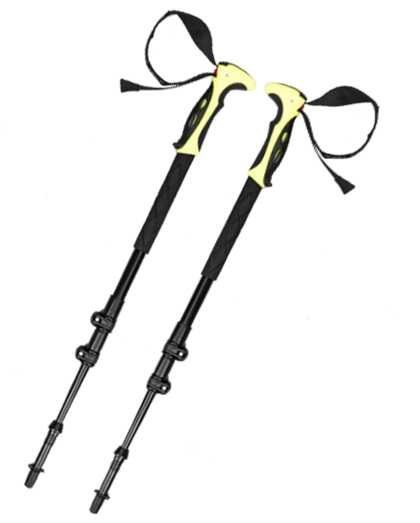

Ski poles, also known as skis, sticks, or poles, are pieces of equipment used for propulsion and balance on a ski machine. Modern ski poles are typically made of lightweight graphite and high-carbon steel, although materials like bamboo are also used. Skis are usually divided into four types. They are walk, stand, boot, and carry. Each type has its own set of advantages and disadvantages.
Walk-on ski poles are the most popular. The ski pole, which is often called a stubby, is designed to be gripped by the skier's fingertips and curled up so that it can be gripped tightly and held onto by the skier. This allows skiers to control their speed without having to hold onto the pole tightly, which prevents it from sliding along the slopes. Stand-on ski poles are shorter than walk poles. Because it does not have a curl to it, stand on skis does not hold the skier's fingers as tightly as a walk pole, making it easier for the skier to control his speed.
When skiing downhill, ski poles are essential to maintaining a balanced movement. Without ski poles, there would be no safe way to balance the skis downhill. Before ski poles were invented, skiers would use laces, webbing, shoe cords, or even nails to hold their skis on their boots. Pole planting, which involves using all four of your fingers to keep the ski pole in place, is necessary to maintain control.

As opposed to skiers who use longer poles to get a tighter grip on the surface, shorter poles help the skiers to get more lift. The longer the ski pole gets, the lesser lift it has. For this reason, skiers tend to find that going shorter gives them more control and lift. In addition, shorter poles let the skiers make repeated adjustments to their speeds. Even a slight change in the speed can mean a huge difference when it comes down to winning a race.
One major advantage that using poles has over traditional skis is safety. For example, when using poles in cross-country skiing and snow boarding, there is less chance of serious injuries occurring. This is because skiers don't have to hold onto tight edges, which can lead to breaks and slips. When skiing downhill, skiers have a better chance of slipping and falling, which could result in head injury and brain damage. However, the biggest concern when using poles for these types of sports is falling off.
Finally, when used properly, ski poles can dramatically reduce the amount of wind resistance felt by the skier. This is important in two different ways. First, the thinner you are, the less wind resistance is felt by your body, which leads to less drag and, ultimately, more time to complete the course. In addition, the lighter your body is, the less fuel you burn, which leads to less overall energy consumption.